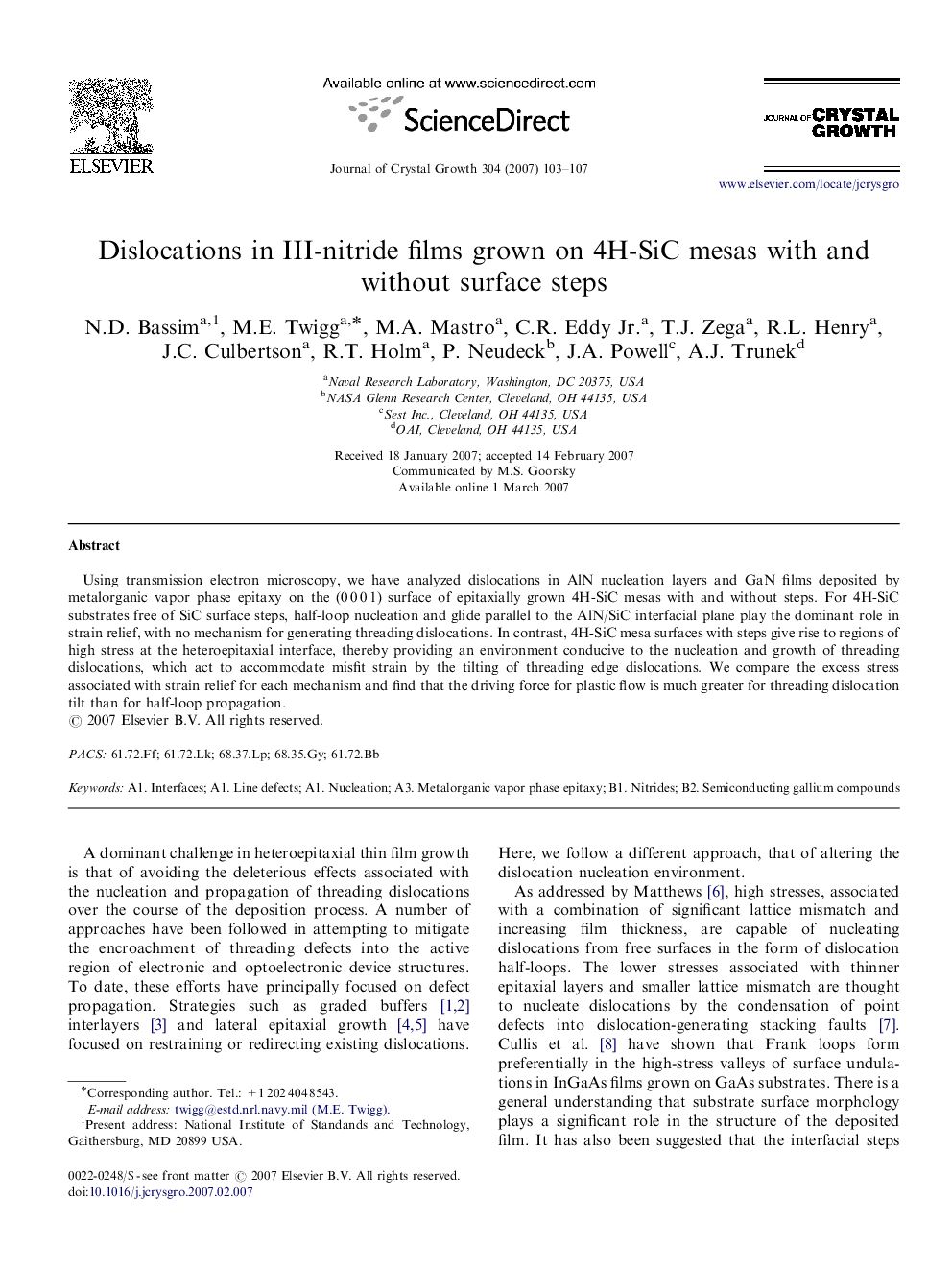| Article ID | Journal | Published Year | Pages | File Type |
|---|---|---|---|---|
| 1796521 | Journal of Crystal Growth | 2007 | 5 Pages |
Using transmission electron microscopy, we have analyzed dislocations in AlN nucleation layers and GaN films deposited by metalorganic vapor phase epitaxy on the (0 0 0 1) surface of epitaxially grown 4H-SiC mesas with and without steps. For 4H-SiC substrates free of SiC surface steps, half-loop nucleation and glide parallel to the AlN/SiC interfacial plane play the dominant role in strain relief, with no mechanism for generating threading dislocations. In contrast, 4H-SiC mesa surfaces with steps give rise to regions of high stress at the heteroepitaxial interface, thereby providing an environment conducive to the nucleation and growth of threading dislocations, which act to accommodate misfit strain by the tilting of threading edge dislocations. We compare the excess stress associated with strain relief for each mechanism and find that the driving force for plastic flow is much greater for threading dislocation tilt than for half-loop propagation.
